How Can I Remotely Control My Child’s Phone (Tested 2025)
I’ve tried many different solutions over the past few years to control my kid’s phones remotely, but nothing worked for an extended period of time. My first idea was to turn off the Wi-Fi. This was effective but really annoying for everyone else in the house. The same could be said for changing the Wi-Fi password and only giving them the updated password when they finished their homework and chores.
I looked for a solution that made it easy to remote control my child’s phone without inconveniencing everyone else. That’s when I started testing parental control apps. After buying and installing over 20 apps, I determined that with powerful web filters, screen time management tools, and live location tracking, Qustodio gave me the best tools to remote control over my kid’s phone.
Best of all, you can try Qustodio free for 30 days – no credit card required, and see try all the remote control features for yourself.
Try Qustodio for Free for 30 Days!
Quick Guide: 3 Easy Steps to Control Your Child’s Cell Phone Remotely
- Create a parental control account: I recommend Qustodio, which gave me remote control over when the phone can be used and what websites the kids can visit.
- Download the app on your child’s device: Don’t skip the admin rights request; without it, the parental control feature won’t work correctly.
- Remote control of your child’s phone: Log in to the parent dashboard. This is where you can lock your child’s cell phone, manage the web filter, and get reports on their online activities.
Is Google’s Family Link Good Enough?
I was hoping to find a free solution to my problems, and so the first app I tried was Google Family Link. I’d heard good things from friends, so I had pretty high expectations. Unfortunately, it didn’t take long for reality to set in.
Family Link doesn’t have any remote control tools to help monitor or restrict which websites kids can visit. While it seemed like it had the remote control screen time features I needed, it was very easy for my kids to find ways to bypass the restrictions. After two weeks, I realized I needed a better solution, and so I uninstalled the app and started testing real parental control apps.
How Can I Remote Control my Child’s Phone?
The easiest way to get remote control access to your child’s phone is to download a parental control app. Before you can control your child’s phone, you will need to create a profile for each child and then download the app on the kid’s phone as well.
You’ll have to give the app admin rights on the phone, which prevents the child from disabling or deleting its features without permission.
After the app is installed and set up on the child’s phone, you can log in to the parent account from a mobile phone or desktop. Every app that I recommend below has a parent dashboard that acts as the nerve center for the monitoring. From there, you can remotely control which websites the child can visit by creating web filters that block websites based on the content of the text, images, and metadata.
This will also give you control over how much time your kids can be on the phone, either by setting a schedule or a daily time limit. The really good apps, like Qustodio, also have a remote locking option. This works much like a remote control for a TV, just press a button, and it will lock the device.
The 7 Best Parental Control Apps for Controlling Your Kid’s Cell Phone Remotely
1. Qustodio: Create Powerful Web Filters Remotely from the Parent Dashboard
Key Features
- Create and enforce screen time limits from anywhere
- Set web filters and rules remotely
- View real-time location and set up a geofence
- Set different time limits for each app on the child’s phone
- 30 day free trial – no credit card required
I had a very good experience with Qustodio when I tested it out on my kids. After installing the app on their phones, I was able to control all the different monitoring features from my phone and computer.
I started out by creating individual web filters for each of my kids, giving my oldest son more freedom and stricter restrictions on the younger kids. Next, I set a daily screen time limit and created a usage schedule. Lastly, I enabled the location tracking to keep track of where they are with the click of a button.
I was also able to create different time limits for each app that is installed on the kids’ phones. I found this helpful because my daughter can spend hours on YouTube watching an endless stream of videos, so I could limit that, but she could still view messages on WhatsApp or check her email.
The one remote control feature that I found lacking is an instant lock option. If I need the kids’ phones to lock right away, I would have to change the daily schedule, so it’s set to turn off right away.
I purchased the Small Plan, which includes protection for five devices, and installed it on a Windows computer and 3 Android devices. It came with a 30-day free trial with no credit card required. At the end of free trial, if I decide not to purchase a subscription, my account will be downgraded to a limited free plan.
Try Qustodio for Free for 30 Days!
2. Bark: Remote Control Over Which Social Media Sites Your Child Can Access
Key Features
- Remotely lock the device from your dashboard
- Connects with over 35 social media networks and email providers
- Create filters and manage screen time remotely
- Add geofences or send location check-in for remote tracking
- 7-day free trial
Bark excels as a social media monitoring app. Its smart algorithm will let you know if your child is being cyberbullied, positing about suicide, drugs, alcohol, violence, and more. Not only does it give you insight into your child’s online life, but it gives you remote control access to block the social media sites, which is incredibly helpful after receiving real-time alerts about troubling behavior.
Another remote control feature that Bark offers is a customizable screen time limitation tool. It gives you the option to create a daily schedule for when the child’s device is available or locked. Additionally, you can choose what types of websites or apps are available at different times throughout the day. You can make adjustments to the schedule in real-time without physical access to the child’s device. You also have the option to remotely block all internet connections at any time through the cloud-based dashboard.
Bark also has a web filter that allows you to set remote restrictions based on specific websites or categories of sites. If your child tries accessing a site that is restricted, they can send a request for it to be unlocked. You will receive an alert, and if you determine the website is appropriate, add it as an exception and unblock the website from anywhere.
The geofence and location check-in features let you remotely track where your children are at any time. You’ll get an alert anytime they enter or leave the geofence zone. You can also send a request from your dashboard for a live location update.
Bark has 2 plans, Bark JR and Bark SR. The difference between the two plans is that Bark JR doesn’t give you the monitoring access or alerts for all the social media, email, and text messages. Both plans give you access to the remote control features and a free 7 day trial.
3. Mobicip: Instantly lock all devices remotely
Key Features
- Set daily and weekly screen time restrictions from anywhere
- Set category-based web filters remotely
- Monitor app use and create category-specific rules from a cloud-based dashboard
- Try it free for 7 days
The Mobicip web filter has 18 categories, and it can be managed remotely. Whether you opt for the default filter, which is based on the child’s age, or you customize which filters should be active, it does a great job blocking inappropriate websites and pictures from opening on your child’s phone. One thing I like is that your child can request access to a blocked site, perhaps the filter mistakenly blocked, and you’ll receive the request and can grant access without being near the child’s phone.
It’s easy to use the remote control feature to instantly lock your child’s device with Mobicip. However, it locks all the devices connected to the parent account. While this is helpful when it comes to calling the family to dinner or a family meeting, it can be annoying if you just want to block access only to one child.
The general screen time rules are also managed remotely. You can create a daily calendar, set daily limits, and set different rules for screen time use throughout the day. The screen time tools are managed from the cloud-based dashboard – so you can make adjustments at any time and from anywhere.
I found a 7-day free trial for Mobicip. I had to give them credit card information when I created the account, but the card isn’t charged until the free trial ends. This meant I had to remember to cancel my account before I got charged for an annual subscription.
Try Mobicip for Free for 7 Days!
4. Norton Family: Complete Remote Control Access to When Your Kids Can Use Their Phone
Key Features
- Remotely control when and how long your kids can be on their phones
- Instantly lock the phone from anywhere
- Free 30-day trial
I came away very impressed with the remote control capabilities of the Norton Family app. I used their free 30-day trial and tested it on my 16-year-old’s Android phone. After installing the app on his phone, I was able to manage his phone from anywhere via the cloud-based parent dashboard.
The dashboard has a very intuitive layout, and in just a few clicks, I set up a daily and weekly schedule. It also has a Lock Now feature, which allows me to lock the device at any time and from anywhere instantly. There is an option for the kids to request more time, and I can accept or decline remotely, which is nice if he’s at a friend’s or I’m not at home when he needs the extension.
Norton Family also comes with a smart, customizable web filter that assigns every website into at least one of 47 categories. From the dashboard, I can block, warn, or allow my kids to visit the website based on its categories. I like that if my son believes that the webpage is appropriate, he can send a request, which instantly appears on my dashboard, and I can unblock the page if I agree.
Norton Family comes with a special feature for remote learning. When activated, I can create a whitelist of the specific websites that my child needs for their homework, and everything else will be blocked. Using the remote schooling feature won’t count against their daily screen time use.
Norton Family has a 30-day free trial that gives you unlimited access to all premium features, so you’ll have enough time to test the app and see if this is the right parental control app for you.
Try Norton Family – Free for 30 Days!
5. mSpy: Complete Remote Control Over Every Action Completed on the Device
Key Features
- Block Wi-Fi connection to specific networks
- Control which apps can be used from anywhere
- 30-day money-back guarantee
While mSpy is best known as a phone tracker that monitors every keystroke, phone call, and text message, it also has powerful remote control features for parents.
One of the most unique remote control features I’ve seen is the Block Wi-Fi option. It’s useful if you want to block your child from connecting to a Wi-Fi network somewhere specific. For example, when they’re visiting grandparents or friends, and you prefer they don’t spend the entire day staring at the phone. You can block the Wi-Fi connection remotely, and the phone will lose its internet connection until you remove the block.
mSpy creates a list of every app that is installed on the device, and you can block it from anywhere through the parental dashboard. Just click on the Block Apps section of the dashboard and block access to as many apps as you want. When you’re ready for your child to use their apps again, you can remove the block.
While mSpy doesn’t have a content filter, it does give you the option of creating a blacklist of websites to block. Enter the URL under the Block Website section, and if your child tries to visit the website, they will see an error message that the site couldn’t be reached.
Apart from enabling remote control of the phone, mSpy also provides remote access to all the activities taking place on the device. This includes the ability to monitor your child’s engagements on social media, observe their internet browsing history, identify their contacts, and track the phone’s GPS location.
mSpy has 3 subscription options, all offering the same remote control features for a single device. They only differ in the length of the contract, as you can subscribe for 1, 3, or 12 months. While mSpy has a 30-day money-back guarantee, it reserves the right to try and fix any issues or problems you’re having before you cancel the account.
Try mSpy with a 30-Day Money-Back Guarantee
6. Net Nanny: Remotely Control What Types of Websites Your Children Can View
Key Features
- Remotely create keyword-based filters
- Block your kids from downloading apps
- 14 days money back guarantee
Net Nanny is one of the few parental control apps I tested that has a separate app for parents and kids. Through the parent app, I can get remote control access to set web filters and screen time limits on the kids’ phones and computers.
Among the remote control functionalities provided by Net Nanny, I find great value in the option to selectively permit or limit my kids’ use of default applications on their gadgets. Moreover, I have the capability to block specific app downloads from the Play or App Store.
Net Nanny gave me the option of what to do with the kids’ phone when the schedule shows the kids must be off their phone or their daily allocation of screen time is over. I have a suggestion: consider restricting internet access while retaining the calling feature on their phone. It’s a viable choice for ensuring a balance between communication and limiting internet usage. However, it’s worth noting that they will still have the opportunity to engage with non-internet-based applications.
The second option is to block the phone completely, which is what I used at bedtime, so the kids couldn’t play around with their phones when they should be sleeping.
There are several different subscription plans to choose from, all of which include the same remote control features. I used their 14-day money-back-guarantee for my experiment and then requested a refund by emailing customer support 12 days after purchasing the subscription. This wasn’t a “no questions asked” policy, so they tried to help me and convince me not to cancel my account, but once I made it clear that I wanted a refund, they issued it without delay.
Try Net Nanny for Free for 14 Days!
7. Kaspersky Safe Kids: Give Remote Permission for Specific Apps to Run
Key Features
- Set filters and screen time limits remotely
- Try it risk-free for 7 days
Kaspersky excelled when it came to giving me remote control access over which apps my kids can use and how long they can use them. It compiles a list of all the installed apps, which I can see on my cloud-based dashboard. I’m able to set time limits for each app or block it entirely, and the restrictions are instantly applied to my child’s phone.
Safe Kids also gives me the option to allow select apps to run, even when the phone is locked. For example, if I know that my kids are doing school work, I might unlock the calculator app or educational apps that they need for their homework. This also works with SMS and calling apps and gives me a little extra control over how they can use the phone, even if I’m still at work or out to dinner.
The Kaspersky Safe Kids app has one of the cheapest plans I tested, but it still has room for improvement before I raise it in my rankings. You can test all the premium features free for 7 days without entering your credit card or PayPal information and see if the remote control features are good enough for your family.
Try Kaspersky Safe Kids for Free for 7 Days!
How to Turn Kids’ Phones Off at Night (or Anytime, Really)?
In my current life stage, I’ve noticed that I go to bed earlier than some of my children. As a result, it has become essential for me to find a way to remotely deactivate their phones. This is necessary to ensure they don’t stay up all night.
I found that there are two ways that the Norton Family app gave me control over when my kids can be on their phones.
- Create a Schedule: Norton Family has two screen time management tools, allowing me to create a daily or weekly screen time schedule. This gave me the flexibility to shut down the phone during school hours, homework time, dinner, and bedtime, while also setting an overall time limit.
- Instant Lock: This is a great feature for shutting down the phone at any time. This way, I was able to shut down the phone for any reason, and it could be done from anywhere.
Get a Remote Control on Your Child’s Cell Phone
There are many benefits to having remote control access over your kid’s cell phones. It gives them the freedom to use their phones, but you can still stay in control without constantly bugging them about when to get off the phone or letting you know what websites they’re visiting.
Qustodio proved to be the best option throughout my testing process, with remote control access over screen time, app use, web filter and location tracking. Don’t take my word for it; you can try Qustodio for yourself for 30 days with its free trial, and see how it works for your family.

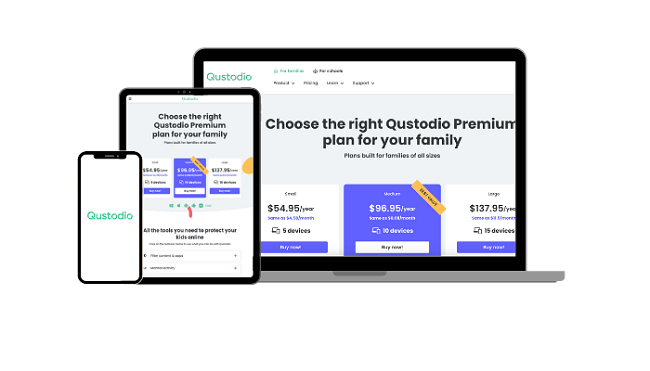
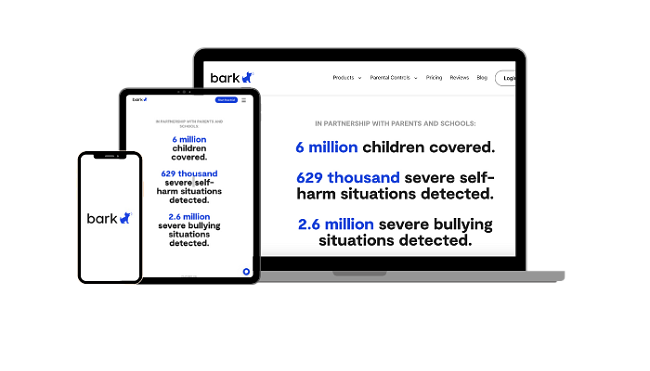
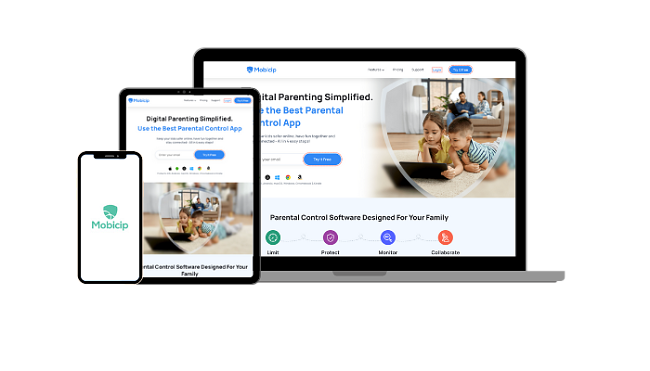
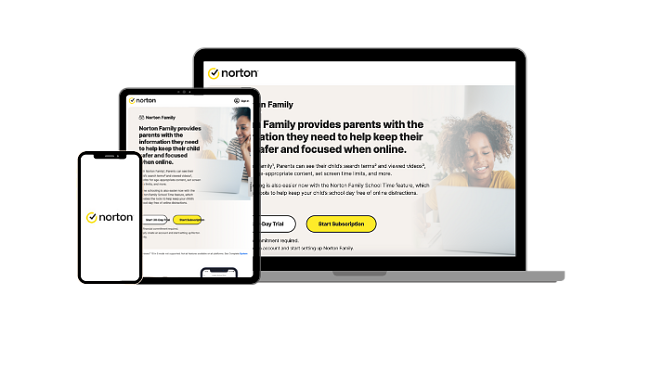
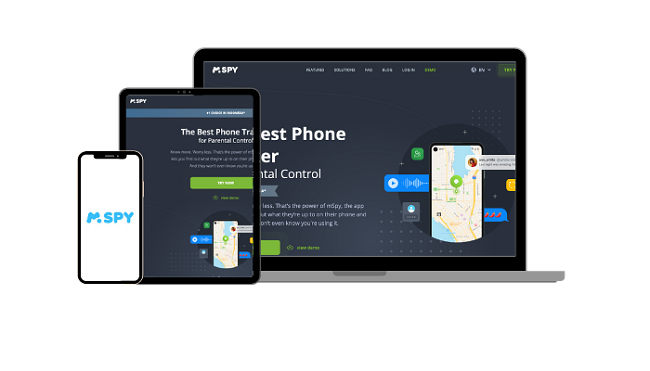
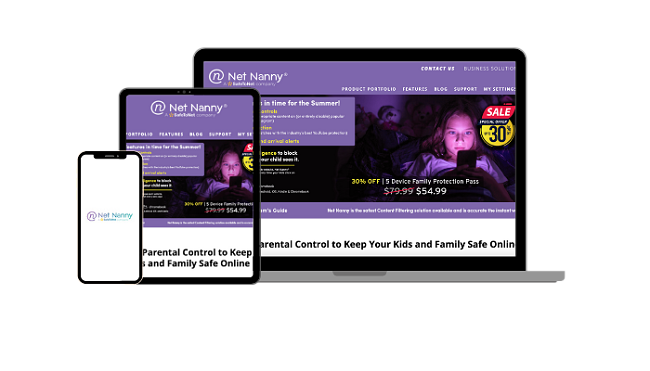
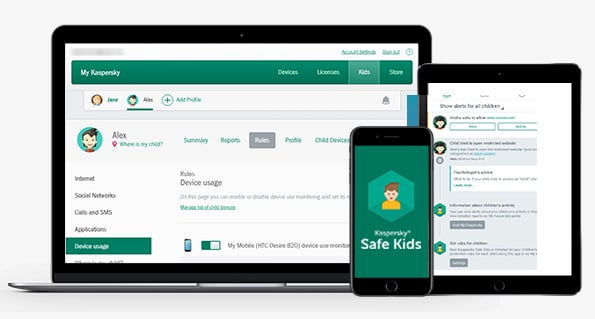




Leave a Comment
Cancel